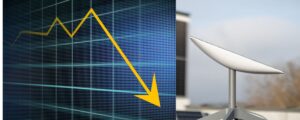
Upon completion, Project Waterworth will extend over 50,000 km—surpassing Earth’s circumference—making it the longest subsea cable project to leverage the highest-capacity technology available. Connecting five major continents, including the U.S., India, Brazil, and South Africa, this initiative will deliver unparalleled digital connectivity.
We’ve announced our most ambitious subsea cable endeavor yet: Project Waterworth.
— Engineering at Meta (@fb_engineering) February 18, 2025
Once complete, the project will be world’s longest subsea cable project using the highest-capacity technology available.
Learn more:https://t.co/RI737buiKi
Designed to foster economic cooperation, enhance digital inclusion, and drive technological advancements, the project will play a critical role in India’s digital transformation. It will support the country’s ambitious digital economy goals, strengthening an already expanding digital infrastructure.
Subsea cables form the backbone of global internet infrastructure, carrying over 95% of intercontinental data traffic. These systems enable essential digital services, including communication, video streaming, and financial transactions. Project Waterworth, backed by a multi-billion-dollar investment, will establish three new oceanic corridors with ultra-high-speed, high-capacity connectivity—critical for the expansion of AI technologies worldwide.
Meta, a leader in subsea cable innovation, has been at the forefront of such developments, previously collaborating on more than 20 subsea cable projects. The company has introduced systems with 24 fiber pairs, surpassing the conventional 8 to 16 pairs found in most networks, ensuring better connectivity to meet growing digital demands.
Continuing this legacy, Project Waterworth will feature cutting-edge engineering, making it the longest and most advanced 24-fiber-pair cable in existence. Designed for durability and rapid deployment, the cables will be laid at depths of up to 7,000 meters in deep waters, with advanced burial techniques protecting them from potential damage caused by ship anchors and other coastal hazards.



